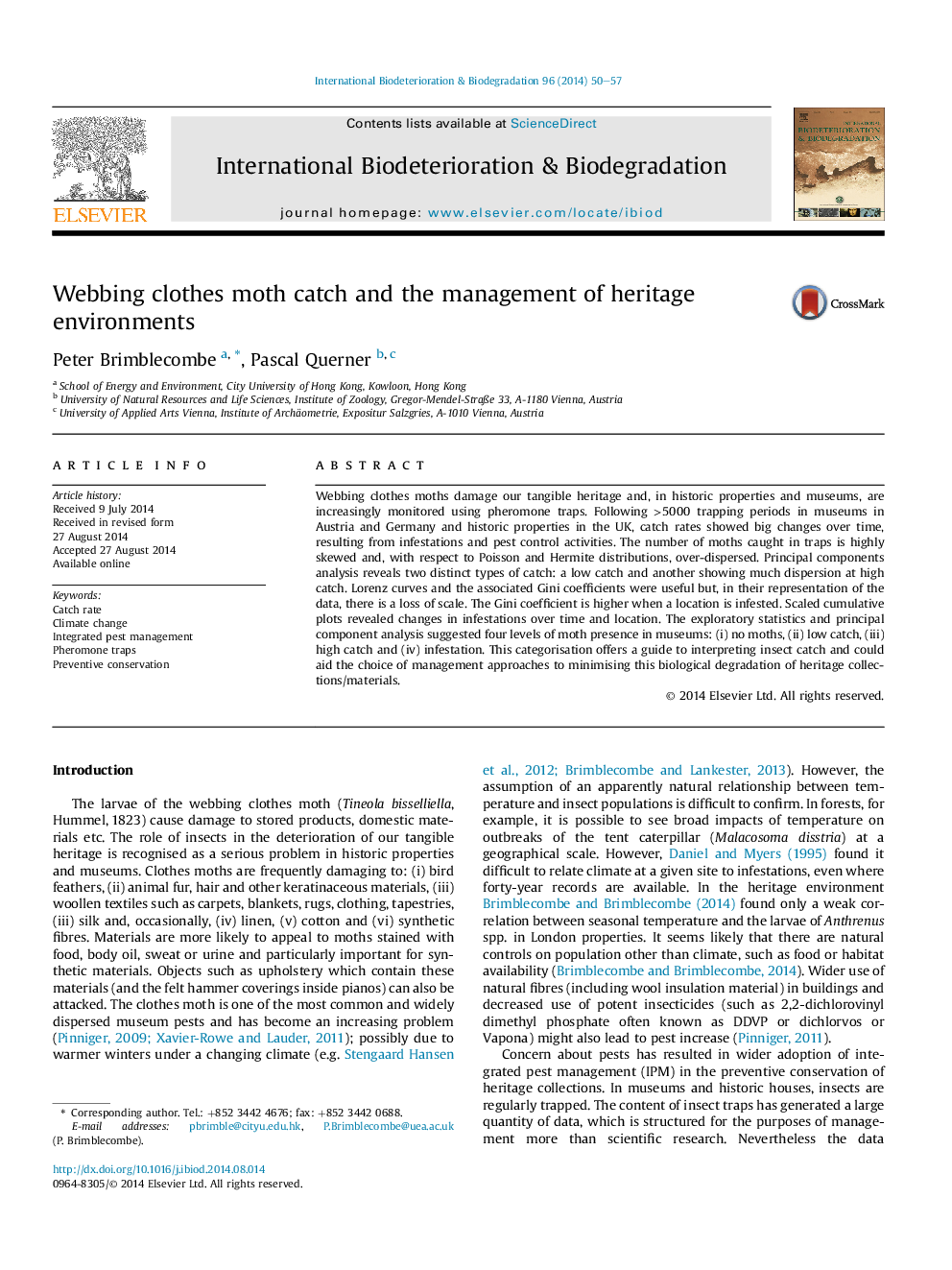| Article ID | Journal | Published Year | Pages | File Type |
|---|---|---|---|---|
| 6289219 | International Biodeterioration & Biodegradation | 2014 | 8 Pages |
Abstract
Webbing clothes moths damage our tangible heritage and, in historic properties and museums, are increasingly monitored using pheromone traps. Following >5000 trapping periods in museums in Austria and Germany and historic properties in the UK, catch rates showed big changes over time, resulting from infestations and pest control activities. The number of moths caught in traps is highly skewed and, with respect to Poisson and Hermite distributions, over-dispersed. Principal components analysis reveals two distinct types of catch: a low catch and another showing much dispersion at high catch. Lorenz curves and the associated Gini coefficients were useful but, in their representation of the data, there is a loss of scale. The Gini coefficient is higher when a location is infested. Scaled cumulative plots revealed changes in infestations over time and location. The exploratory statistics and principal component analysis suggested four levels of moth presence in museums: (i) no moths, (ii) low catch, (iii) high catch and (iv) infestation. This categorisation offers a guide to interpreting insect catch and could aid the choice of management approaches to minimising this biological degradation of heritage collections/materials.
Related Topics
Life Sciences
Environmental Science
Environmental Science (General)
Authors
Peter Brimblecombe, Pascal Querner,
